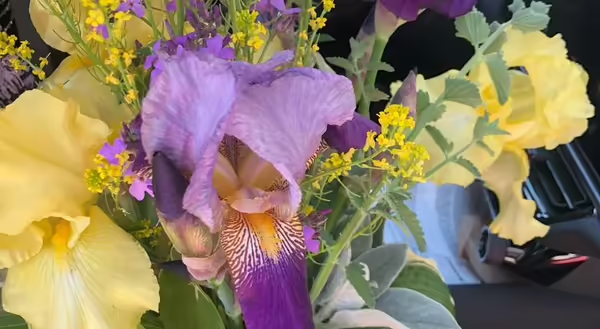
By Margaret Kelly, Extension Master Gardener serving Fulton, Mason, Peoria and Tazewell counties
Springtime is the best time to focus on iris care, allowing us to enjoy a breathtaking flower display throughout the iris season.
Fertilizer
When getting ready for fertilizing, here is a good rule of thumb. Apply fertilizer when the tulips are blooming in our gardens. Bone meal, superphosphate or granular fertilizer with a formula of 5-10-10 or 10-10-10 are most effective. Avoid using any fertilizer high in nitrogen, such as fresh manure as it contains too much nitrogen, which encourages rapid foliage growth instead of bloom. When fertilizer is applied, avoid placing directly on the iris as it may burn or injure the plant. Apply as top dressing around the plant and work into the soil.
Spring cleaning
Spring means taking action against our least desirable garden weeds. As soon as we see new foliage sprouting, clean off dead leaves and other forms of winter protection. Pull weeds out of the iris beds. Get the weeds while they’re small! Remove brown leaves or leaves affected by “leaf spot”. Trim the leaf at an angle, just below the leaf spot, keeping the shape of the leaf, leaving as much of the healthy leaf intact. “Leaf spot’ does not harm the plant, just unattractive. Dead heading is the removal of spent blooms throughout the iris season. Remove the bloom stalk by cutting at the base when all the blooms are finished blooming on that stalk. Taller iris plants make be staked to prevent the plant from falling over in the rain or wind. About a month after all blooms are done, apply a light application of fertilizer and water in.
Summer planning
July is the time to reflect on the garden and add, remove or change things around. Think about dividing irises, as tall bearded irises are divided every 4-5 year and standard dwarf irises are divided every 3-4 years as they multiply quicker. Plan to order new irises or attended an iris sale for new irises and ideas!